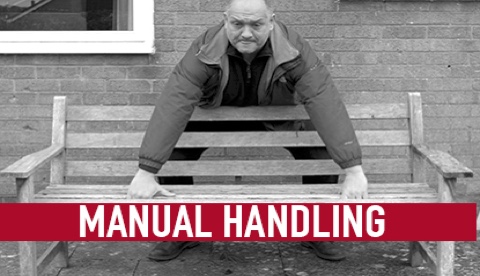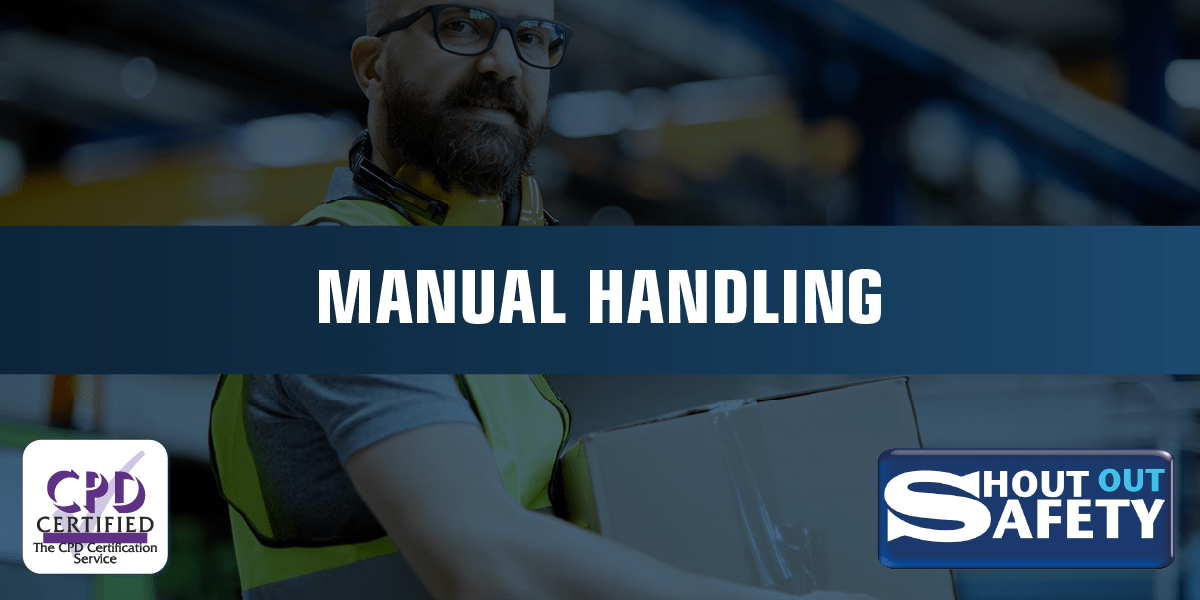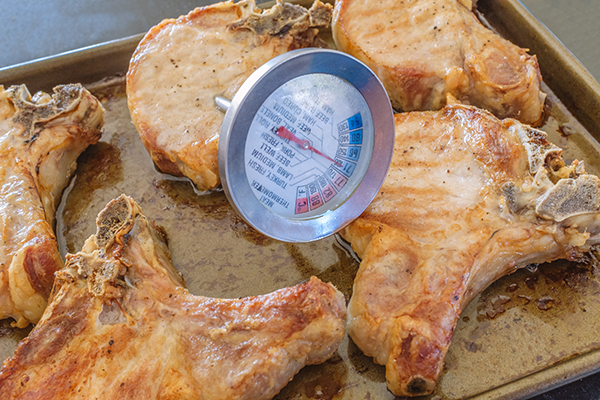Time needed: 2 minutes
To achieve good manual handling techniques, follow these 7 basic principles when dealing with basic lifting, pushing, pulling, lowering, filling, emptying, or carrying:
- Plan your lift:
Ensure the object is light enough to lift, steady, and unlikely to shift or move. Remove obstructions- ensure your route is clear and there is space to lower the load wherever you are planning on moving it to. For long lifts, think about resting the load midway on a table / bench to change your grip. Will help be needed? Is there equipment that could be used to aid the lift? Do not lift or work with more than you can effortlessly manage. There’s a big difference between what people can lift and what they can lift in a safe manor. If you feel uncertain, seek advice or get help.
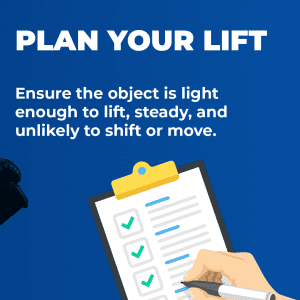
- Position your feet:
Keep your feet apart, giving a balanced and stable base for lifting. Standing with your feet apart gives you a firm base to start your manual handling activity. Your leading leg should be as far forward as is comfortable and, if possible, pointing in the direction you intend to go. You don’t need to stay rigid, move your feet if you need to during the lift to keep yourself steady.
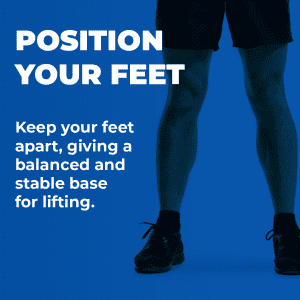
- Ensure a good posture:
Be prepared to move your feet during the lift to maintain a stable posture. Wearing footwear such as high heels or flip flops, or tight clothing, may make this harder. When lifting from a low level, bend your knees, ensure your back is kept straight maintaining its natural curve. A small bending of the back, hips and knees is preferable to either completely flexing the back or completely flexing the hips and knees (squatting). Do not bend the back any further whilst lifting the object- this can happen if the legs begin to straighten before lifting the object. Do not twist when you lift- especially whilst the back is bent. Hold your shoulders level and facing the same direction as the hips at all times.
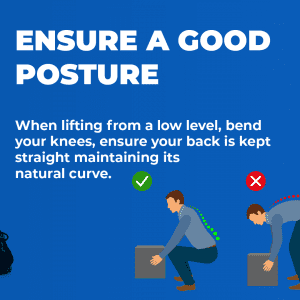
- Maintain a firm grip:
Make sure to keep your arms within the boundary created by your legs. Whilst holding onto something, a hook grip is less strenuous than keeping your fingers straight. If you need to make an alteration to your grip as you proceed to lift the object, do this as effortlessly as possible.
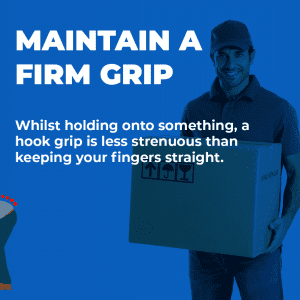
- Lift smoothly:
Lift your chin as you commence the lift, ensuring control of your head. Look ahead, not down at the load, once it has been held securely.

- Keeping close to the load:
Where feasible, hug the load close to the body- this ought to aid you make a stronger and more solid lift than gripping the load tightly with the hands only. Grip the load close to your body for as long as possible, with the heaviest side of the load towards you. If you can’t get near to the load at first, slide it towards you before you attempt to lift it.

- Put it down… then adjust it:
If you have to place the load in a certain position, put it down first, then manoeuvre it into the desired position.

The Manual Handling Operations Regulations 1992 define manual handling as:
‘…any transporting or supporting of a load (including the lifting, putting down, pushing, pulling, carrying or moving thereof) by hand or bodily force.’
Correct Manual handling techniques are extremely important for your safety. Did you know that manual handling causes approximately 40% of all workplace injuries? These injuries can range from arms, legs, neck, joints, and back. As a result, musculoskeletal disorders (or MSD’s) triggered by daily work activities (or manual handling) are a large contributor to workplace absenteeism.
The HSE have reported that 25.7 million working days were forfeited in 2016 and 2017 due to work-related illness. Musculoskeletal disorders accounted for 35% of this number. Furthermore, back pain and other MSDs account for approximately 40 per cent of all sickness absence in the NHS, resulting in a cost in the region of £400 million each year. Such a large amount of lost days significantly impacts productivity and output, as employees simply aren’t in work to complete their jobs. Manual handling training is important for reducing this figure and improving overall productivity.
So, who needs good manual handling techniques training? Pretty much everyone!
- Warehouse and factory teams.
- Heavy manual labourers.
- Construction and building site staff.
- Office staff.
- Delivery drivers.
- Kitchen staff.
- Farmhands.
- School staff
- Hospital workers
Before any lifting activity, consider:
- Do I need to move it?
- Can I use a handling aid? Eg. Sack trolley
Not practicable? Use this our infographic to allow you to safely assess the following factors:

A large number of employers will already have programmes in place that can deliver continuing manual handling instruction to their staff. Training should take place regularly to refresh, update and re-emphasise the information received on earlier training courses.
About the Shout Out Safety Manual Handling online course
This entry-level CPD accredited course is in 4 sections and covers the following subjects:
- What is manual handling?
- Manual handling injuries
- Medical descriptions
- Duty of employers and employees
- Avoid, assess or reduce the risk
- Best practice: doing it safely
There are 4 sets of questions which you will need to answer. Achieve the pass mark and you’ll be able to move onto the next section. This is important training – no-one wins if the trainee isn’t concentrating. Shout Out Safety courses are entertaining because we’re serious about Health & Safety training. Learning is easier when people are engaged (and they engage much more when they’re entertained.)

